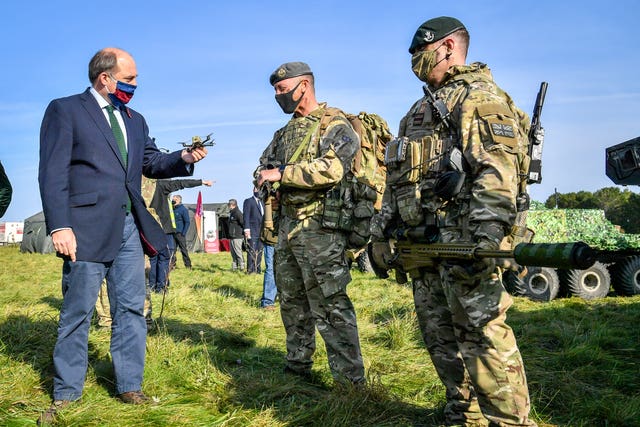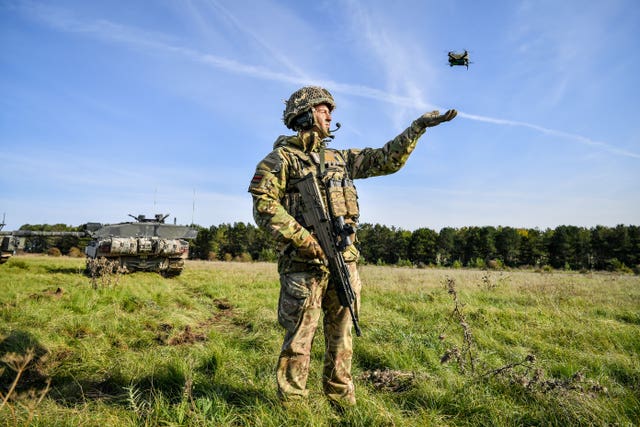Britain is in a “very real race” with its enemies for technological advantage on the battlefield, the Defence Secretary has warned.
Ben Wallace said new armed forces’ equipment needs to be “threat-driven” and better aligned to the UK’s future needs.
Speaking as the Ministry of Defence published its Science and Technology Strategy 2020, he said: “We are in a very real race with our adversaries for technological advantage.
“Proliferation of new technologies demands our science and technological technologies to be threat-driven and better aligned to our future needs.
“What we do today will lay the groundwork for the decades to come.”
The strategy, which comes ahead of the Integrated Review of foreign policy, defence, security and international development, seeks to ensure the forces are equipped to meet future threats.

Mr Wallace said the UK needs to improve its understanding and access to emerging technologies, and not just “match our adversaries like for like” but “actively increase our technological edges”.
And he said he hoped to accelerate the journey from laboratory to battlefield, while stressing that he did not want to replace humans but rather to support and supplement them.
He added: “To succeed, we’re going to have to tap into our brightest brains across defence industry, academia and the whole of society.
“We’re going to have to bridge the valley of death, between advanced science and technology research, production, scaling and commercialisation.
“We’re going to have to make smarter choices about how we invest taxpayers’ money, take greater S&T risk where we do spend that money.”

Mr Wallace was speaking after a demonstration of the latest unmanned autonomous vehicles, drones and geolocation systems, which can now be securely linked together, on Salisbury Plain on Monday.
The Army demonstrated how a new Android Team Awareness Kit (Atak) can allow troops to see the position of other soldiers while fighting, helping to avoid friendly fire.
The mobile phone-style device, which is positioned on a soldier’s chest, also links to drones and autonomous vehicles fitted with cameras which act as “extendable eyes”, enabling troops to see a livestream of a target or threat miles away.
It also links up to the X3 unmanned autonomous vehicle, which can be fitted with cameras or speakers to distract enemy forces, or to send live footage back to troops.
The X3 can travel at speeds of up to 20km per hour (12.4 mph) and has a range of about 2km (1.2 miles) but can be linked with other vehicles to relay information along a chain up to 24km (15 miles) long.

It can also be used to break into compounds, or clear roadblocks, with enough power to move objects up to three tonnes.
The technology will be tested along with a range of prototype systems as part of the Army Warfighting Experiment on Salisbury Plain this week.




Comments: Our rules
We want our comments to be a lively and valuable part of our community - a place where readers can debate and engage with the most important local issues. The ability to comment on our stories is a privilege, not a right, however, and that privilege may be withdrawn if it is abused or misused.
Please report any comments that break our rules.
Read the rules hereLast Updated:
Report this comment Cancel